
Messier 109 is a barred spiral galaxy exhibiting a weak inner ring structure around the central bar approximately 67.2 ± 23 million light-years away in the northern constellation Ursa Major. M109 can be seen south-east of the star Phecda.

NGC 3184, the Little Pinwheel Galaxy, is a spiral galaxy approximately 40 million light-years away in the constellation Ursa Major. Its name comes from its resemblance to the Pinwheel Galaxy. It was discovered on 18 March 1787 by German-British astronomer William Herschel. It has two HII regions named NGC 3180 and NGC 3181.
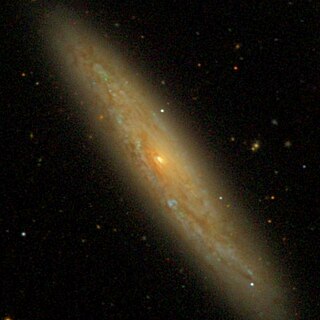
NGC 3877 is a type Sc spiral galaxy that was discovered by William Herschel on February 5, 1788. It is located below the magnitude 3.7 star Chi Ursae Majoris in Ursa Major.

NGC 4013 is an edge-on barred spiral galaxy about 55 million light-years away in the constellation Ursa Major. The disk of NGC 4013 shows a distinct "peanut"-shaped bulge in long exposure photographs that N-body computer simulations suggest is consistent with a stellar bar seen perpendicular to the line of sight.

NGC 3953 is a barred spiral galaxy located in the constellation Ursa Major. It was discovered by Pierre Méchain on 12 March 1781. The galaxy is known to exhibit an inner ring structure that encircles the bar. NGC 3953 is a member of the M109 Group, a large group of galaxies located within the constellation Ursa Major that may contain over 50 galaxies.

NGC 6251 is an active supergiant elliptical radio galaxy in the constellation Ursa Minor, and is more than 340 million light-years away from Earth. The galaxy has a Seyfert 2 active galactic nucleus, and is one of the most extreme examples of a Seyfert galaxy. This galaxy may be associated with gamma-ray source 3EG J1621+8203, which has high-energy gamma-ray emission. It is also noted for its one-sided radio jet—one of the brightest known—discovered in 1977. The supermassive black hole at the core has a mass of (5.9±2.0)×108 M☉.

NGC 3718, also called Arp 214, is a galaxy located approximately 52 million light years from Earth in the constellation Ursa Major. It is either a lenticular or spiral galaxy.

NGC 373 is an elliptical galaxy located around 204 million light-years away in the constellation Pisces. NGC 373 was discovered on December 12th, 1876 by John Louis Emil Dreyer. NGC 373 does not contain an active galactic nucleus, and it does not have much star formation.

NGC 3191 is a barred spiral galaxy in the constellation Ursa Major. It was discovered on 5 February 1788 by William Herschel. It is located at a distance of about 400 million light years from Earth, which, given its apparent dimensions, means that NGC 3191 is about 115,000 light years across.

NGC 7541 is a barred spiral galaxy located around 104 million light-years away in the constellation Pisces. It was discovered in 1785 by William Herschel, and it is 106,000 light-years across. NGC 7541 is known to have lots of star-forming regions.
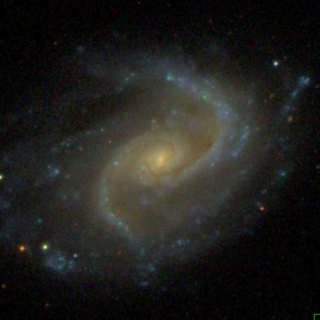
NGC 895 is a spiral galaxy located around 98 million light-years away in the constellation Cetus. NGC 895 was discovered November 28, 1856 by R. J. Mitchell. NGC 895 is not known to have much star-formation, and is not known to have an active galactic nuclei.

NGC 6622 is an interacting spiral galaxy in the constellation Draco. It is located around 313 million light-years away, and it was discovered by Edward D. Swift and Lewis A. Swift on June 2, 1885. NGC 6622 interacts with NGC 6621, with their closest approach having taken place about 100 million years before the moment seen now. NGC 6622 and NGC 6621 are included in the Atlas of Peculiar Galaxies as Arp 81 in the category "spiral galaxies with large high surface brightness companions".
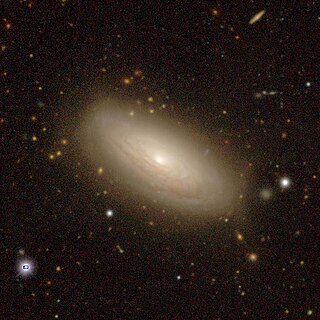
NGC 1100 is a spiral galaxy located around 235 million light-years away in the constellation Eridanus. NGC 1100 is situated close to the celestial equator, and it was discovered on October 17, 1885, by Francis Preserved Leavenworth. NGC 1100 is not known to have much star formation, and is not known to have an active galactic nucleus.
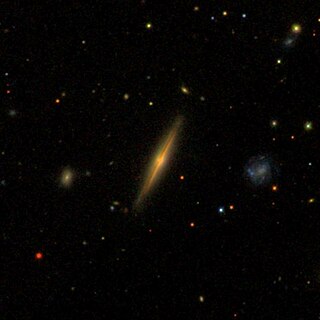
NGC 6122 is a spiral galaxy located around 484 million light-years away in the constellation Corona Borealis. NGC 6122 was discovered on May 6, 1886 by the astronomer Guillaume Bigourdan, and its diameter is 211,000 light-years. NGC 6122 is not known to have much star-formation, and does not have an active galactic nucleus.

NGC 1616 is an intermediate spiral galaxy located around 213 million light-years away in the constellation Caelum. NGC 1616 was discovered on October 24th, 1835 by the astronomer John Herschel, and its diameter is 116,000 light-years across. NGC 1616 is not known to have much star-formation, and it is not known to have an active galactic nucleus.
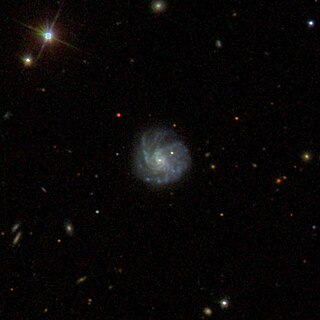
NGC 3678 is a spiral galaxy located around 361 million light-years away in the constellation Leo. NGC 3678 was discovered on April 13th, 1831 by the astronomer John Herschel, and its diameter is 127,000 light-years across. NGC 3678 is not known to have much star-formation, and it is not known to have an active galactic nucleus.

NGC 4825 is a lenticular galaxy located around 230 million light-years away in the constellation Virgo. NGC 4825 was discovered on March 27th, 1786 by the astronomer William Herschel, and its diameter is 133,000 light-years across. NGC 4825 is not known to have much star-formation, and it does not have an active galactic nucleus.

NGC 2603 is a small compact spiral galaxy located 787 million light-years away in the constellation of Ursa Major from the Solar System. It was discovered by George Johnstone Stoney, an Irish astronomer, on February 9th, 1850. NGC 2603 has an estimated diameter of 81,000 light-years. It contains a narrow-line active galactic nucleus. The Hyperleda database associates NGC 2603 and NGC 2606 as one single galaxy. NASA/IPAC database on the other hand, classifies NGC 2603 as galaxy PGC 3133653.

NGC 1110 is a barred spiral galaxy located around 53 million light-years away in the constellation Eridanus. NGC 1110 was discovered on December 21, 1886 by the astronomer Francis Preserved Leavenworth, and has a diameter of 56,000 light-years. NGC 1110 is not known to have lots of star formation, and it is not known to have an active galactic nucleus.

NGC 5601 is a lenticular galaxy around 259 million light-years away in the constellation Boötes. NGC 5601 was discovered on March 27th, 1867 by the irish astronomer Robert Ball, and it has a diameter around 88,000 light-years. NGC 5601 is not known to have much star formation, and it is not known to have an active galactic nucleus.




















